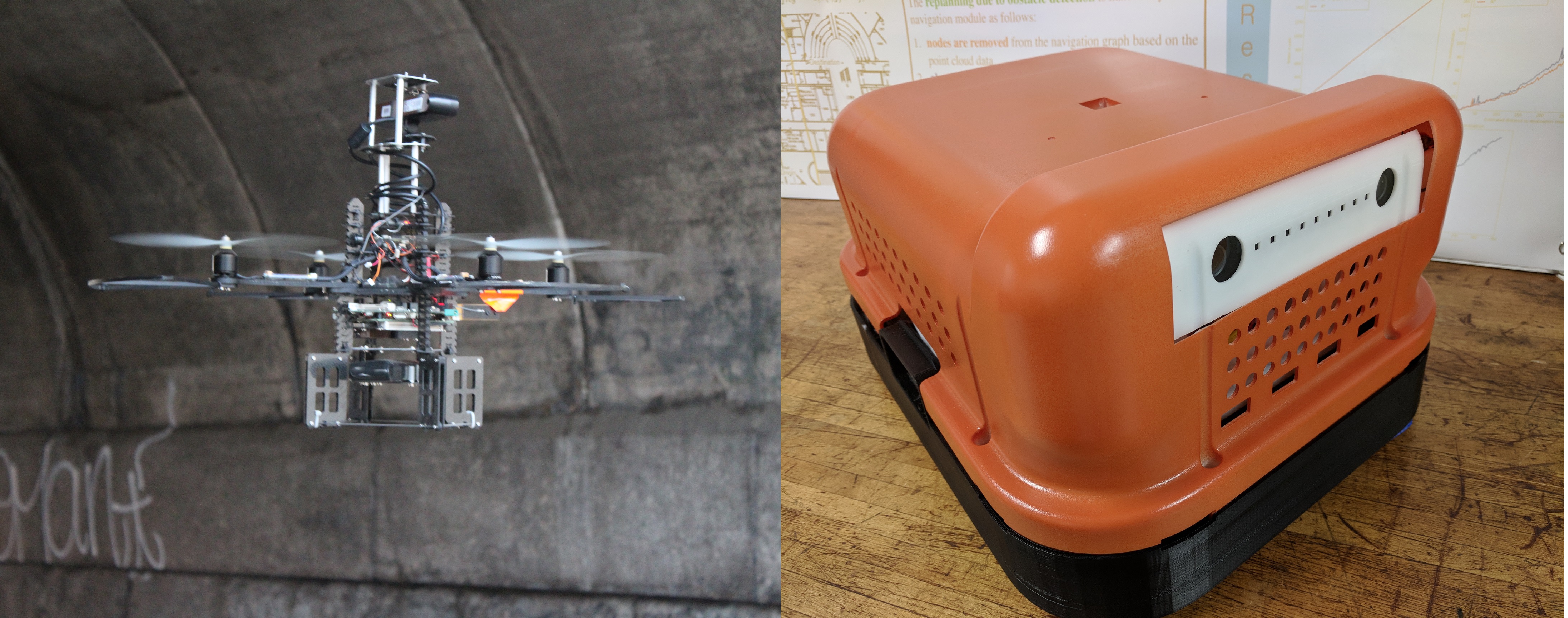We address the problem of using robotic approach to do infrastructure inspection. The unaccessable tunnel, bridge, and other concrete regions challengs the tradional labor intensive method. Illustration of CityFlyer and New Generation Rise-Rover
The Second Generation
The inspection system consists of three subsystems, including: 1) Control and Mission system (CMS): a quadrotor UAV with mission planner and navigation control system. It fuses visual odometry with inertial measurement unit (IMU) data, called visual inertial odometry (VIO) with an output frequency of 100 HZ, for robust positioning control. 2) Deep-Inspector: Towards a CSSC database system with very deep CNN for spalling and crack detection and labelling. It is performed on the ground station via wireless data transition at 2 HZ. 3) visualpositioning and mapping (P&M): loop closing is introduced to reduce drift of visual odometry (VO) to guarantee accurate positioning and 3D point cloud mapping with defect area registration for visualization. Hardware of CMS is consist of CityFlyer and a laptop based ground system. Since the paper mainly discuss the deep database system and 3D positioning with defect registration.

The detection network is fine tuned based on vgg16 with pre-trained model:

We did several tests with CSSC dataset and field test with CityFlyer:


Now, we move forward with a higher labeled dataset with pixel level accuracy of target spalling/crack region for segmentation, we looking forward to collaborate. If interested, please email: chiyangliang At gmail Dot com
The First Generation
First, CCNY Robotics Lab proposed a new generation of wall climbing robot, called Rise-Rover, to perform impact-echo (IE) acoustic inspection using a machine learning approach to do signal analysis. The wall climbing robot system structure is illustrated below:
Please check this following link to obtain more details: > - Rise Rover

